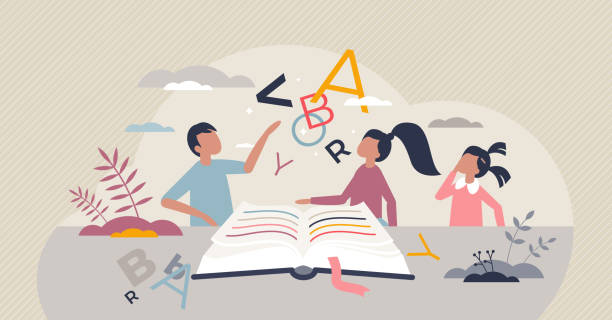In today’s fast-paced banking world, literacy, customer service stands out as a critical bridge between informed decision-making and trustworthy relationships. This article dives deep into how financial literacy empowers customers while elevating customer service standards in banks, exploring strategies, benefits, and real-world examples that make it all click. To set the stage, consider the broader context from the pillar content on Customer Relationship Management in Banking, which outlines how banks build trust through personalized strategies, leverage technology like AI chatbots and CRM platforms, highlight the advisory role of chartered bankers, showcase success stories such as Bank of America’s educational campaigns, tackle challenges like data privacy and fintech competition, and emphasize continuous learning for long-term client partnerships—all aimed at fostering loyalty and efficiency in the industry.
Understanding Financial Literacy in Banking

Financial literacy isn’t just about knowing how to balance a checkbook; it’s the foundation for navigating complex financial landscapes with confidence. At its core, financial literacy involves grasping concepts like budgeting, saving, investing, debt management, and understanding banking products. Banks play a pivotal role here, often stepping in as educators to fill knowledge gaps that could otherwise lead to poor choices, like racking up unnecessary debt or missing out on growth opportunities.
Think about it: many customers walk into a bank branch or log into an app feeling overwhelmed by terms like APR, compound interest, or retirement planning. Without solid literacy, they might opt for high-interest loans when better options exist, or shy away from investments altogether. Banks recognize this, and that’s why organizations like the American Bankers Association (ABA) provide resources to help institutions deliver education that boosts community growth. This isn’t charity; it’s smart business. When customers understand their finances better, they make decisions that align with their goals, reducing risks for everyone involved.
Moreover, financial literacy evolves with life stages. For young adults, it might mean learning about student loans or credit scores; for retirees, it’s about estate planning or protecting against scams. Banks tailor their approaches accordingly, using workshops, online modules, and even gamified apps to make learning engaging. However, the real magic happens when this education ties directly into customer service interactions—turning routine queries into teachable moments.
Literacy, Customer Service: The Vital Intersection
Here’s where literacy, customer service truly intersects: customer service reps aren’t just problem-solvers; they’re educators in disguise. Imagine calling your bank about an overdraft fee, and instead of a quick fix, the representative explains how to set up alerts or automate transfers to avoid it next time. That simple act builds trust and prevents future issues, transforming a potentially frustrating experience into an empowering one.
Banks improve customer service through financial education by embedding it into everyday operations. For instance, personalized advice during account openings or loan applications can clarify options, helping customers choose wisely. This approach not only satisfies immediate needs but also fosters long-term loyalty. Studies show that educated customers maintain higher balances and better credit scores, which benefits the bank’s bottom line. It’s a win-win—customers feel supported, and banks see reduced defaults and increased product uptake.
Yet, this intersection isn’t without hurdles. Some customers resist education, viewing it as sales pitches in disguise. Banks counter this by focusing on genuine value, like free tools that track spending or simulate investment scenarios. Transitioning smoothly, let’s explore how banks implement these strategies effectively.
Strategies for Integrating Literacy into Customer Service

Integrating financial literacy into customer service requires deliberate planning, but the payoffs are huge. Banks start by training staff to spot opportunities for education during interactions. A teller noticing frequent overdrafts might suggest a budgeting workshop, while a loan officer could walk a client through credit report basics.
One key strategy is developing comprehensive programs. Optimizely highlights how banks turn content channels—blogs, emails, videos—into educational hubs, fostering engagement and loyalty. For example, interactive webinars on topics like “Building Emergency Funds” or “Understanding Mortgages” allow customers to ask questions in real-time, blending service with learning.
Another tactic involves leveraging technology. Mobile apps with built-in financial tips, like Samsung’s insights on boosting literacy for younger generations via smartphones, make education accessible anytime. AI-powered chatbots can quiz users on concepts or recommend resources based on transaction history. This personalization ensures relevance, making customers more receptive.
Don’t forget community outreach. Banks host seminars in local branches or partner with schools for youth programs, extending service beyond transactions. Enrich.org notes that such efforts build stronger relationships, showing banks care about well-being. However, success hinges on measuring impact—through surveys or tracking usage—to refine approaches continually.
Training Staff for Literacy-Focused Service
Staff training is the backbone. Banks invest in workshops where employees learn to communicate complex ideas simply, using analogies like comparing compound interest to a snowball rolling downhill. Role-playing scenarios prepare them for real interactions, ensuring they respond empathetically.
Programs like those from the FDIC emphasize creative education tailored to customer knowledge levels. When staff are confident, they naturally weave literacy into service, turning complaints into coaching sessions. For instance, a customer confused about fees might get a quick lesson on account types, preventing recurrence.
Providing Educational Resources and Tools
Resources range from simple brochures to sophisticated platforms. Bank of America’s Better Money Habits offers free videos and articles on everything from saving to home buying, accessible via app or website. These tools empower customers to self-educate, reducing service calls for basic queries.
Digital innovations amplify this. Apps with budgeting trackers or virtual advisors provide hands-on learning, as PA Consulting suggests, creating customers for life through early interventions. Banks also use social media for bite-sized tips, making literacy fun and shareable.
Offering Personalized Financial Advice
Personalization takes it up a notch. Using data analytics, banks offer tailored advice—like suggesting debt consolidation for high-interest credit card users. This not only improves service but also boosts literacy by explaining why certain choices matter.
Bridgeforce points out that such programs enhance customer experience and compliance. It’s about being proactive; a bank noticing irregular deposits might advise on emergency funds, heading off potential crises.
Benefits of Financial Literacy for Bank Customers
Financial literacy arms customers with tools to thrive. First off, it leads to better money management—folks learn to budget effectively, avoiding pitfalls like overspending. Investopedia stresses that literate individuals handle spending, saving, and borrowing basics, supporting life goals like buying a home or retiring comfortably.
Moreover, it builds confidence. Customers make informed decisions on investments, understanding risks and rewards. Andover Bank notes benefits like smarter investing in stocks or real estate. This reduces stress; knowing how to read statements or spot scams provides peace of mind.
On a broader scale, literacy promotes financial wellness. CSI highlights how banks support this through resources, leading to healthier finances overall. Customers save more, borrow wisely, and even pass knowledge to family, creating generational impacts.
However, these benefits extend to banks too, as empowered customers engage more deeply.

Benefits for Banks in Prioritizing Literacy
For banks, financial literacy isn’t an add-on—it’s a growth driver. Educated customers are loyal ones; they stick around because they trust the institution that helped them succeed. BAI reports that literacy fosters win-wins, with customers managing finances better and banks seeing higher retention.
Operationally, it streamlines service. Fewer misunderstandings mean fewer disputes or errors, cutting costs. Number Analytics explains that literate customers enable efficient operations, as they use products correctly. Plus, it opens revenue streams—customers might upgrade to premium accounts or add services like insurance.
Regulatory perks abound too. Programs align with CRA requirements, earning credits for community development. And in a competitive market, literacy differentiates banks, attracting new clients who value education.
Aquent adds that societal benefits, like empowered communities, enhance brand reputation. It’s cyclical: happy, knowledgeable customers refer others, fueling growth.
Case Studies: Successful Literacy Programs in Banks
Real-world examples illustrate the power of these initiatives. Take Bank of America’s Better Money Habits—launched to provide free education, it has reached millions, building trust and loyalty. By offering practical advice on habits like saving, the program reduces financial stress and strengthens customer ties.
Another standout is BMO’s efforts, revolutionizing education for over 280,000 users across North America through interactive modules. This has improved literacy scores and engagement, showing how digital tools scale impact.
In Malaysia, Bank Negara’s programs promote literacy nationwide, fostering inclusion and stability. Community banks like Clear Mountain use apps like Zogo for gamified learning, boosting participation.
These cases prove that targeted programs yield measurable results, from higher satisfaction to better financial outcomes.
Challenges in Implementing Literacy Programs
Despite the upsides, challenges persist. One biggie is engagement—customers might ignore resources if they’re not user-friendly. Banks solve this with gamification or incentives, like rewards for completing modules.
Resource allocation is another hurdle; developing programs costs time and money. Partnerships with platforms like Knowsia can help, offering ready-made tools.

Cultural barriers exist too, especially in underserved communities wary of banks. Tailored, empathetic approaches build bridges.
Finally, measuring ROI isn’t straightforward. Banks use metrics like program completion rates or post-education surveys to gauge success. Overcoming these ensures programs thrive.
The Future: Technology and Financial Literacy in Customer Service
Looking ahead, technology will supercharge literacy, customer service. AI and VR could simulate financial scenarios, making learning immersive. ABA’s 2025 insights predict digital innovations driving engagement.
Conversational banking via chatbots will deliver personalized tips, as Infobip suggests. For younger folks, social media and apps will dominate, closing knowledge gaps.
Banks must stay agile, updating content for trends like sustainable investing. This evolution promises more inclusive, effective service.
How Knowsia Supports Financial Education
At Knowsia, the platform empowers users to learn, teach, and earn from financial knowledge. With resources on banking, exam prep for certifications like CA or ACCA, and AI tools for practice, it complements bank efforts. Users can access question banks on literacy topics or even create courses to share expertise, making education interactive and rewarding.
For banks, partnering with Knowsia could enhance their programs, providing scalable content that boosts customer service.
Conclusion
Financial literacy and customer service go hand in hand, creating empowered customers and thriving banks. By integrating education into service, institutions build trust, reduce risks, and drive growth. As we’ve seen through strategies, benefits, and cases, the investment pays off. Moving forward, embrace these practices—your finances, and your bank, will thank you.

